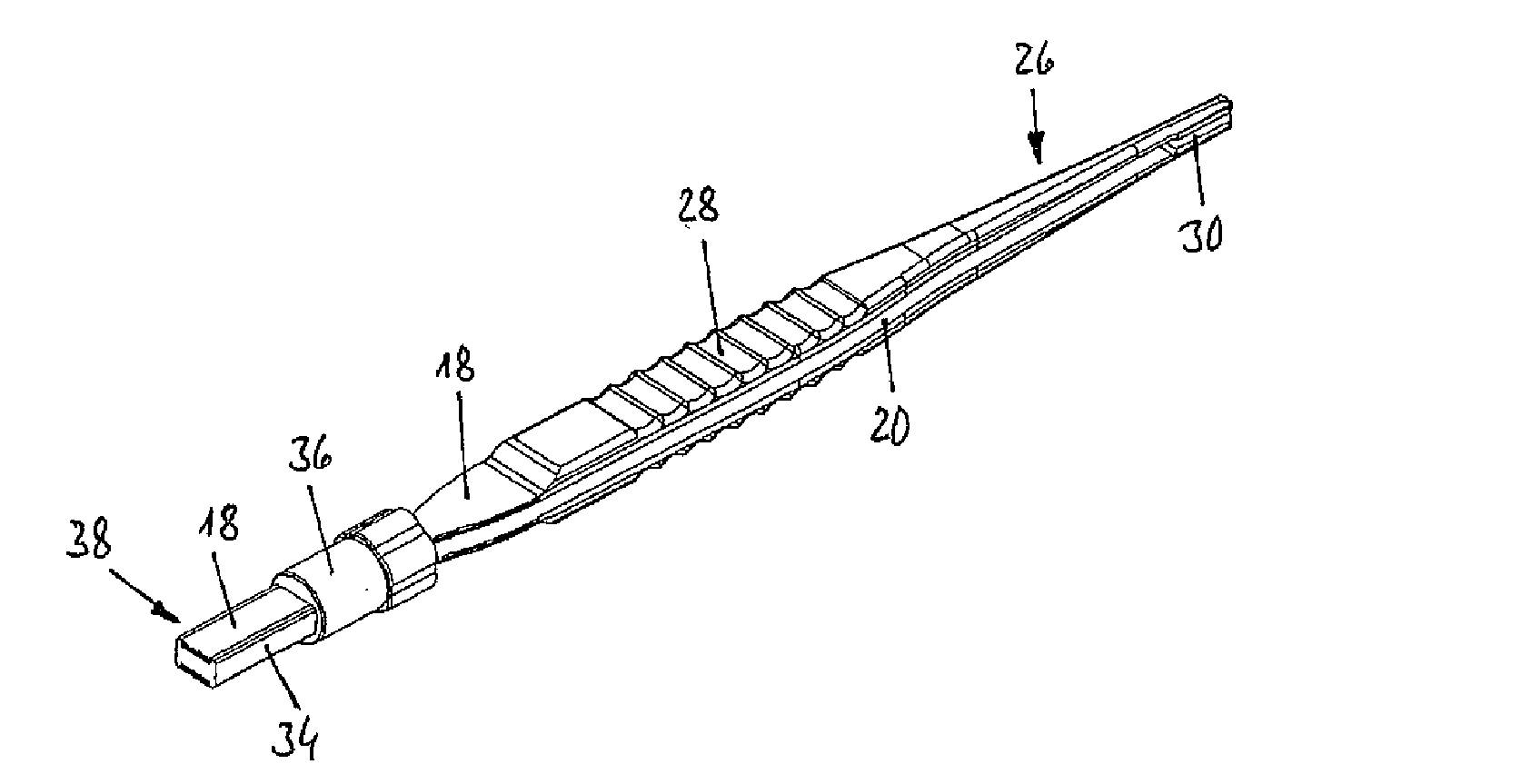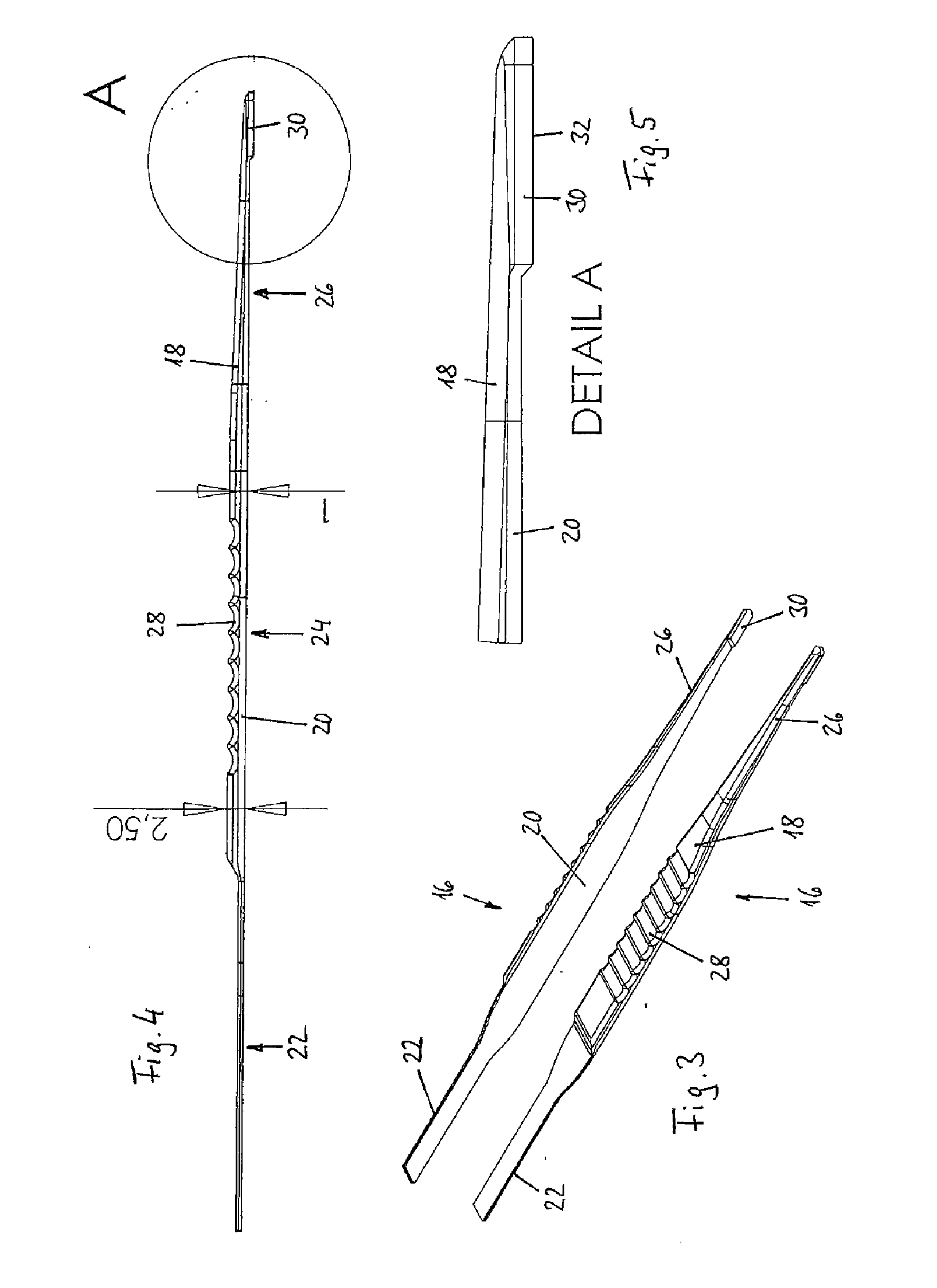Bipolar forceps
- Summary
- Abstract
- Description
- Claims
- Application Information
AI Technical Summary
Benefits of technology
Problems solved by technology
Method used
Image
Examples
Embodiment Construction
[0021]In order to produce the forceps, a bimetal strip 10 is firstly produced as basic material. To this end, a strip 12 of a sheet made of an elastically resilient material and a strip 14 of a sheet made of a biocompatible metal with high electrical and thermal conductivity are placed flat on top of one another. The strip 12 preferably consists of stainless steel. The strip 14 preferably consists of silver or a silver alloy, more particularly of AgNiO.15. The strip 12 for example has a material thickness of 1.5 mm and the strip 14 for example has a material thickness of 1 mm. The strips 12 and 14 lying flat on top of one another are rolled onto one another under pressure, or are pressed onto one another, as a result of which a non-detachable integral connection is created in the contact zone by cold welding and the bimetal strip 10 is formed.
[0022]In a press, a blank of a limb 16 of the forceps is stamped out of the bimetal strip 10 in a single work stroke of the press and deformed...
PUM
| Property | Measurement | Unit |
|---|---|---|
| Area | aaaaa | aaaaa |
| Mechanical properties | aaaaa | aaaaa |
Abstract
Description
Claims
Application Information
 Login to View More
Login to View More - R&D
- Intellectual Property
- Life Sciences
- Materials
- Tech Scout
- Unparalleled Data Quality
- Higher Quality Content
- 60% Fewer Hallucinations
Browse by: Latest US Patents, China's latest patents, Technical Efficacy Thesaurus, Application Domain, Technology Topic, Popular Technical Reports.
© 2025 PatSnap. All rights reserved.Legal|Privacy policy|Modern Slavery Act Transparency Statement|Sitemap|About US| Contact US: help@patsnap.com



